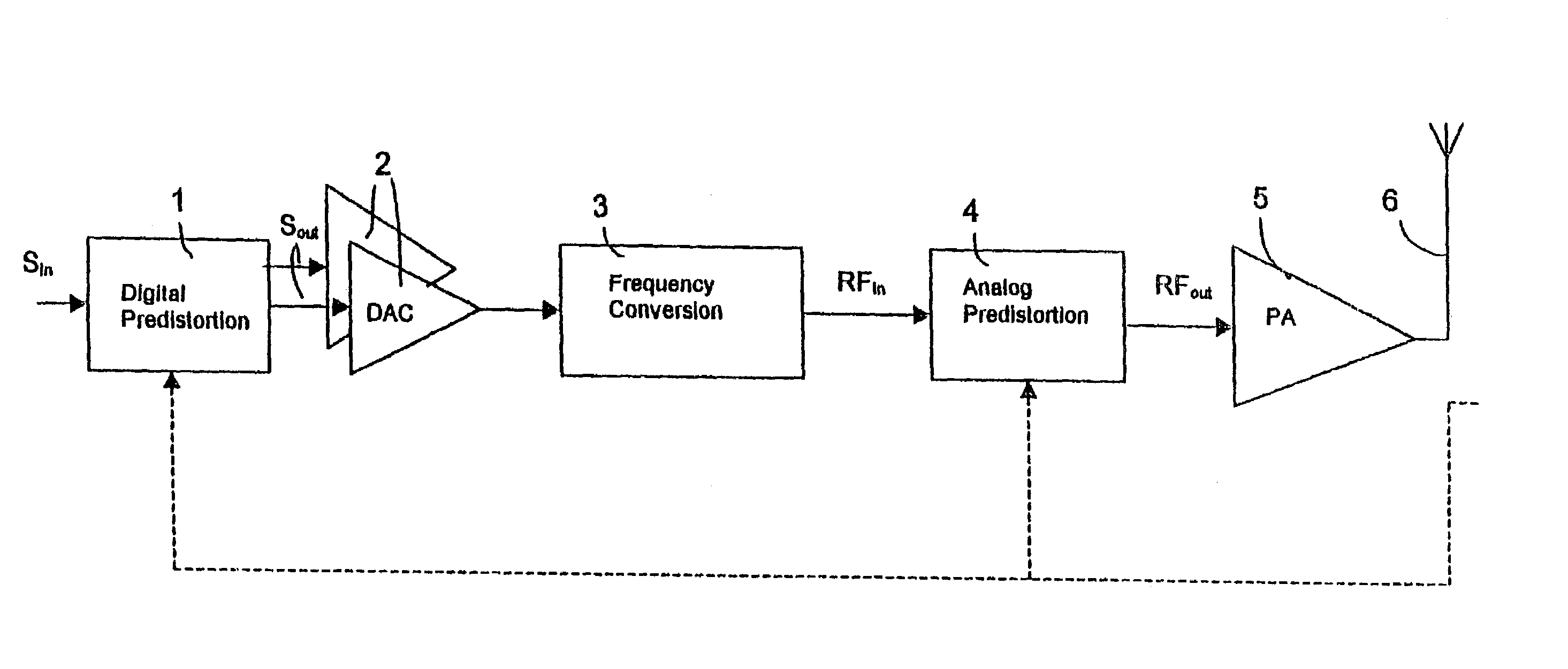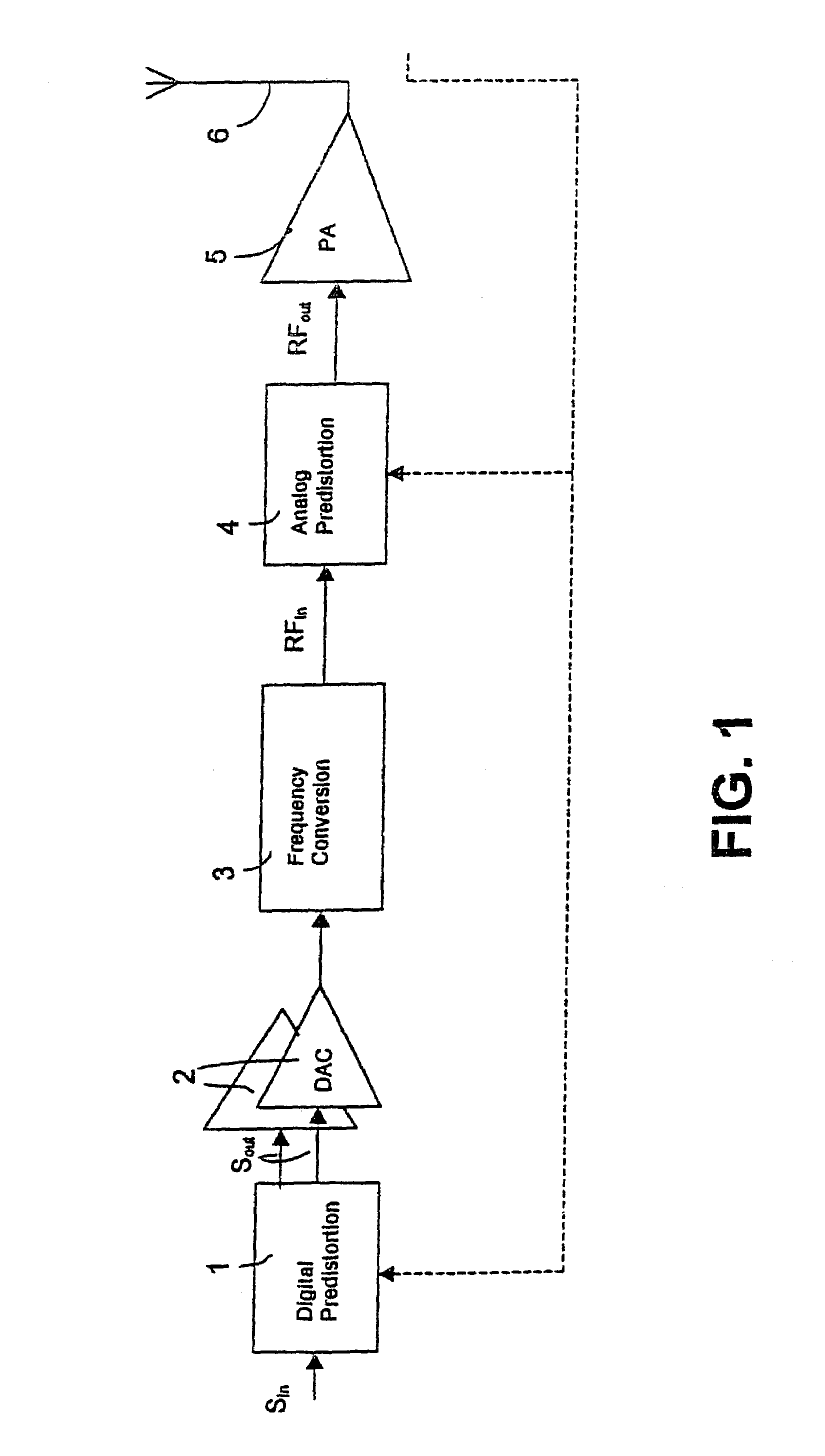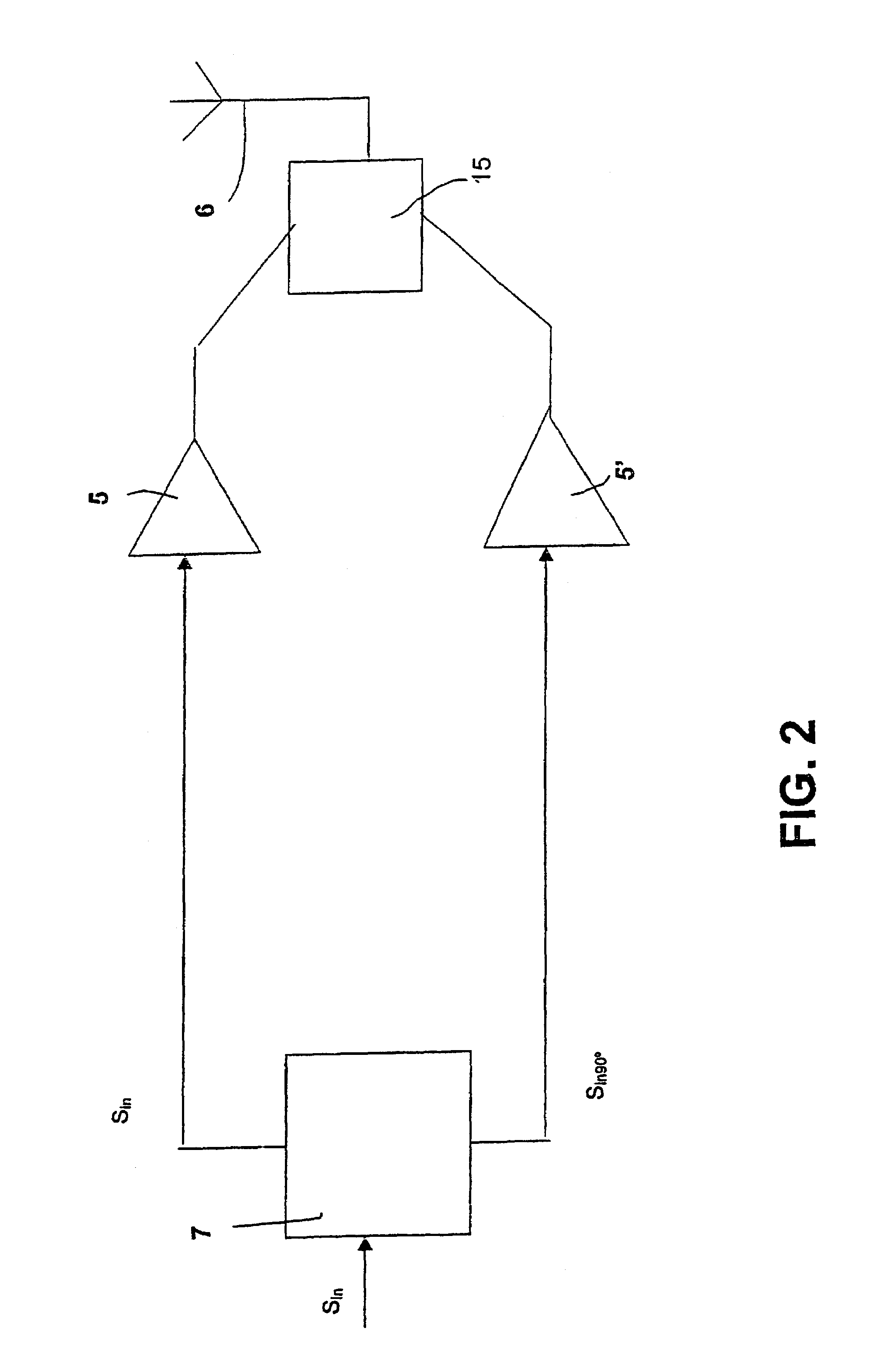Method and apparatus for generating a radio frequency signal
a radio frequency signal and radio frequency technology, applied in the field of linear amplification of radio frequency signals, can solve the problems of inherently non-linear devices of rf power amplifiers, interference distortion with signals on other channels, difficult and expensive production of analog elements with excellent matching characteristics, etc., to achieve the effect of improving linearisation
- Summary
- Abstract
- Description
- Claims
- Application Information
AI Technical Summary
Benefits of technology
Problems solved by technology
Method used
Image
Examples
Embodiment Construction
[0051]With reference to FIG. 1, a digitized complex baseband input signal Sin is first predistorted, as indicated by block 1, to produce a complex baseband digital predistorted output signal Sout. More particularly, this is done in a manner to be complementary with respect to a combination of an analog predistorter and a power amplifier, discussed further below and indicated by blocks 4 and 5, respectively. This combination of an analog predistorter and a power amplifier can be thought of as forming a linear power amplifier.
[0052]The complex baseband digital predistorted signal Sout is then converted to an analog signal by two Digital to Analog Converters (DAC), indicated at 2. Alternatively, although not shown in FIG. 1, the baseband digital predistorted signal Sout can be first digitally frequency converted, before being converted to an analog signal via a single DAC.
[0053]The output from the DAC is then frequency converted by frequency conversion circuits, indicated by block 3, t...
PUM
 Login to View More
Login to View More Abstract
Description
Claims
Application Information
 Login to View More
Login to View More - R&D
- Intellectual Property
- Life Sciences
- Materials
- Tech Scout
- Unparalleled Data Quality
- Higher Quality Content
- 60% Fewer Hallucinations
Browse by: Latest US Patents, China's latest patents, Technical Efficacy Thesaurus, Application Domain, Technology Topic, Popular Technical Reports.
© 2025 PatSnap. All rights reserved.Legal|Privacy policy|Modern Slavery Act Transparency Statement|Sitemap|About US| Contact US: help@patsnap.com



